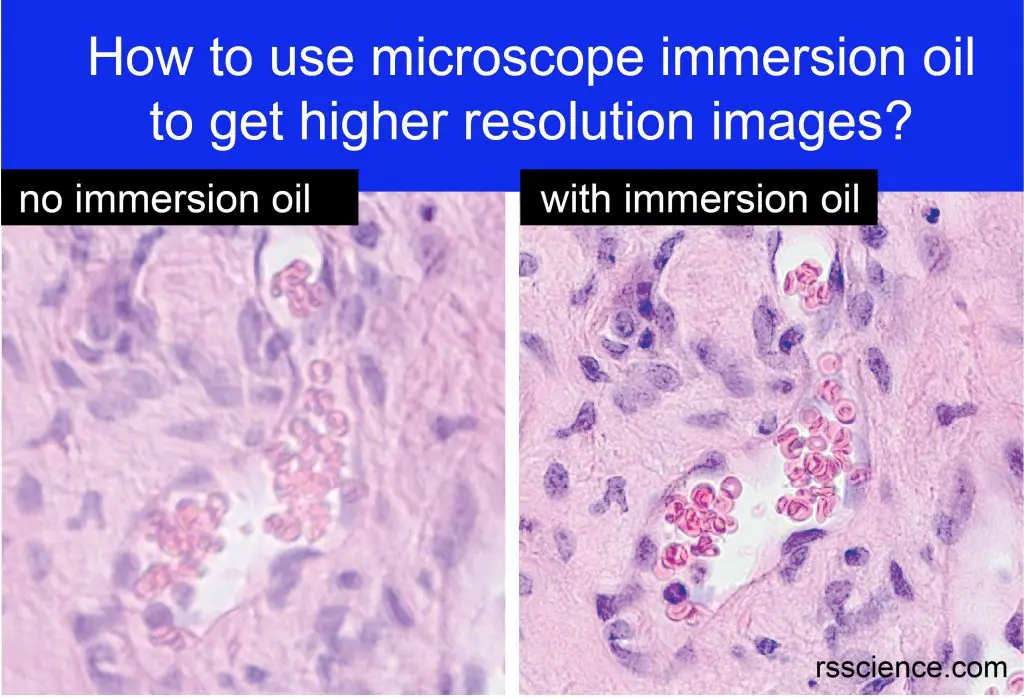(update 5/19/2020)
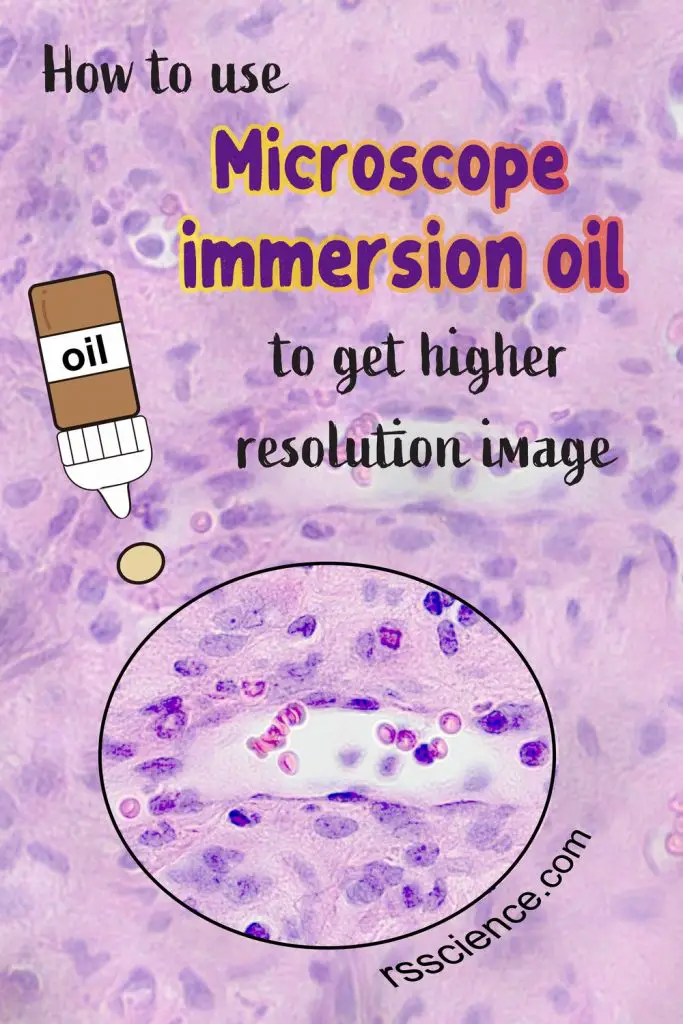
This article covers
What is microscope immersion oil
Microscope immersion oil is a transparent oil that has a unique optical character and viscosity for use in microscopy, especially in higher magnification.
Why do you need a microscope Immersion Oil
The quality of an image depends not only on the Magnification but also on the Resolution of your microscope lens. Resolution (R) is your ability to distinguish details in your specimen. High Magnification but low Resolution can only give you a blurred image.
Here is the equation of the Resolution:
R = λ/ (2xNA), R: Resolution; λ: light wavelength; NA: Numerical Aperture
The numerical Aperture (NA) determines the limit of the Resolution that your microscope can achieve. Briefly, NA is related to the capability of your lens to gather light. The value of NA ranges from 0.025 for very low magnification objectives (1x to 4x) to as much as 1.6 for high-performance objectives utilizing specialized immersion oils. The higher the NA, the better the Resolution is.
Using an immersion lens and oil can improve your Resolution, but why?
When the light passes from one material to another (for example: from glass to air), it bends due to the refractive index difference between two materials. The light could be refracted or scattered and lost. Generally speaking, when using lower magnification objective lenses (4x or 10x), the light refraction is not usually noticeable. However, once you use the 63x or higher objective lens, the light refraction when using a dry lens (means without immersion oil) is significant.
If you can reduce the amount of light refraction, more light passing through the microscope slide will be directed through the very narrow diameter of a higher-power objective lens. In microscopy, more light is equal to a clearer and crisper image. By placing a medium, such as immersion oil with a refractive index equal to that of the glass slide, in the space filled with air, more light is directed through the objective and a clearer image is observed.
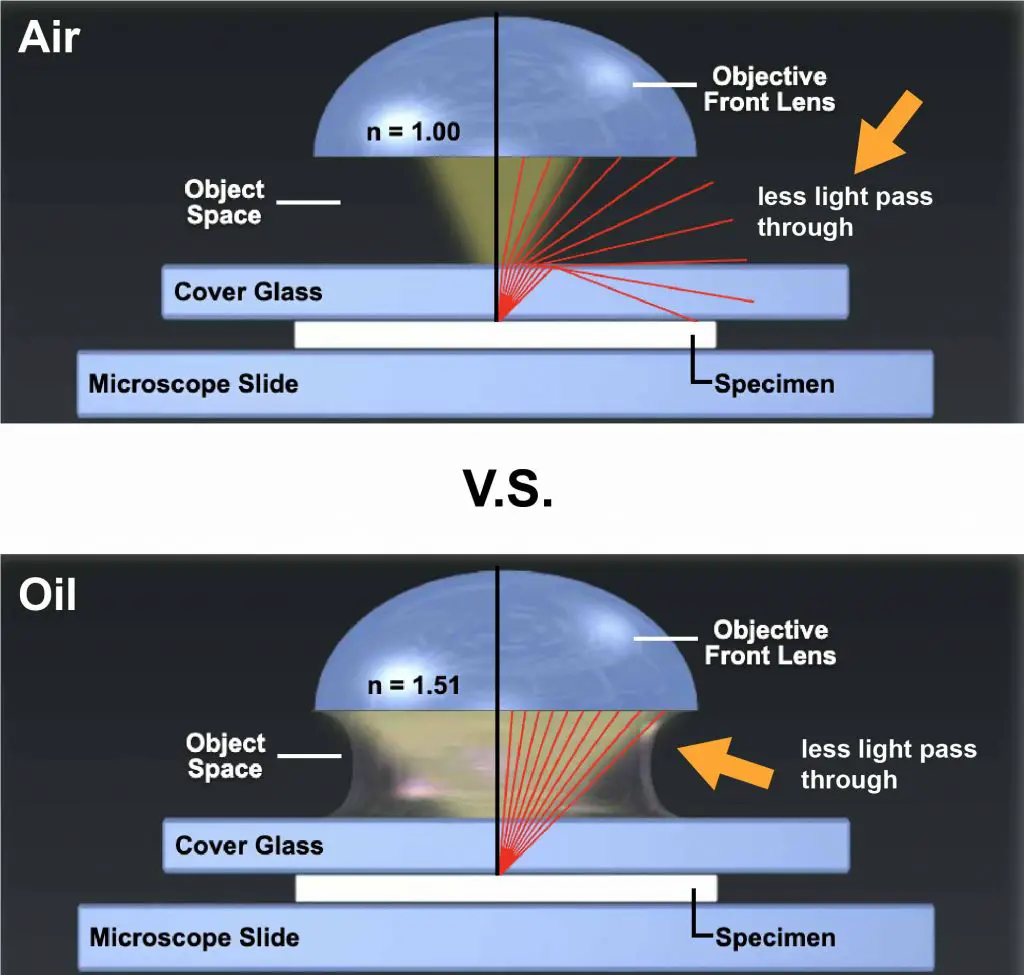
[In this Figure] The illustration of light refractory in the air vs in the immersion oil.
The refractive index of air is 1, while the refractive index of immersion oil is 1.51, which is very close to the cover glass. Therefore, allowing all the light to pass to the lens.
The difference between no immersion oil vs. with immersion oil
Below is an example. The images were captured using a microscope with a 63x objective lens. The left image was dry (no oil), and the right image was with microscope immersion oil. Notice the difference in image quality and the Resolution between the image captured dry versus that captured with immersion oil.

When to use a microscope immersion oil
Not every lens is suitable for immersion oil use. Typically you don’t need the immersion oil with a lower magnification lens. You will need immersion oil when using a higher magnification lens, but be sure that the lens is an oil lens. If you are not sure, check with your manual or supplier.
How to use microscope Immersion Oil
IMPORTANT: Before using immersion oil, make sure that your objective lens is made for use with immersion oil. Use immersion oil on the non-oil objective lens could damage the lens. Make sure you read the manual of your microscope first.
-
Find the area of interest using a low magnification objective. Move the lens from the low power up to the 40x objective, stopping at each one to focus and make sure the area of interest is still in the center of the view.
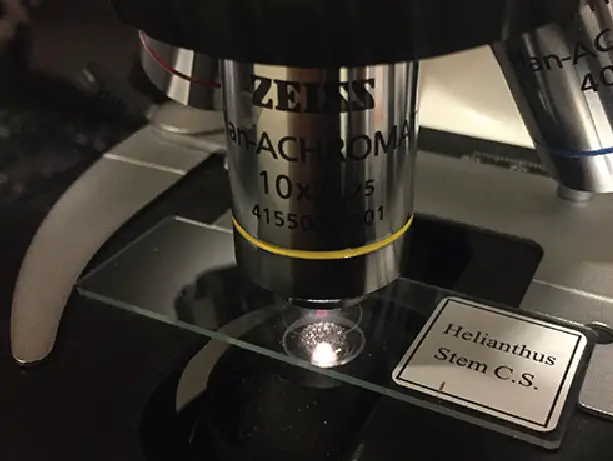
-
Rotate the objective lens between the 40x (dry) and 100x (oil) lens, but don’t fully engage the oil objective yet.
Note: some 63x or even 40x could also be oil lenses. Make sure you check your objective lens before use.
-
Place “one drop” of immersion oil directly onto your coverslip.
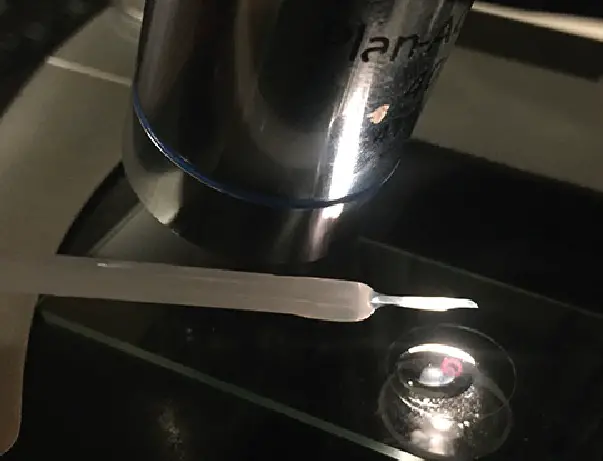
-
Slowly rotate your oil objective lens into place and bring the nose of your objective in contact with the drop of oil.
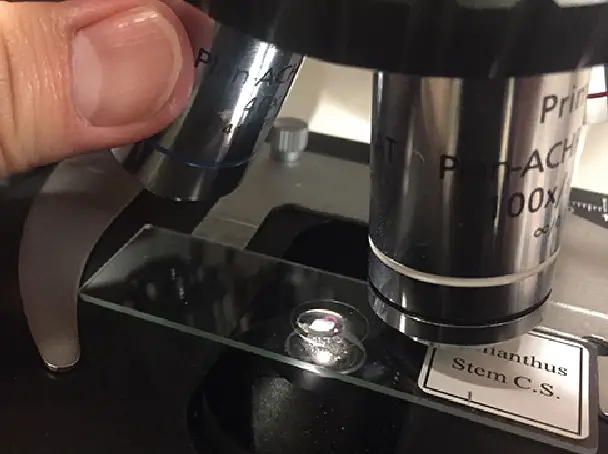
-
Use only the fine focus control, very slowly bring your specimen back into focus. Keep in mind that now the objective lens is very close to the coverslip.
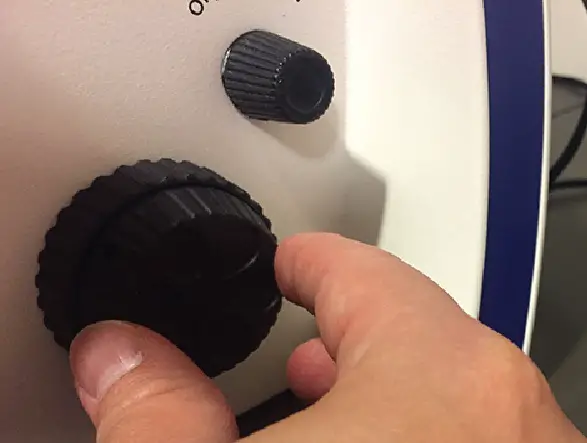
-
When finished using your oil immersion lens, carefully wipe the oil from all glass surfaces (lens and slides) using a piece of lens cleaning paper.
Then, take a second piece of lens paper with a small amount of alcohol (ethyl or isopropyl) or lens cleaning solution (recommended) to wipe all glass surfaces again to remove any remaining oil. Failure to remove immersion oil from lenses will result in hardened oil on lenses that will affect future clarity.
Note: Do not rotate the objective lens from 100x (oil) back to 40x (dry) before cleaning the slide. Otherwise, you will bring the immersion oil to the non-oil objective lens.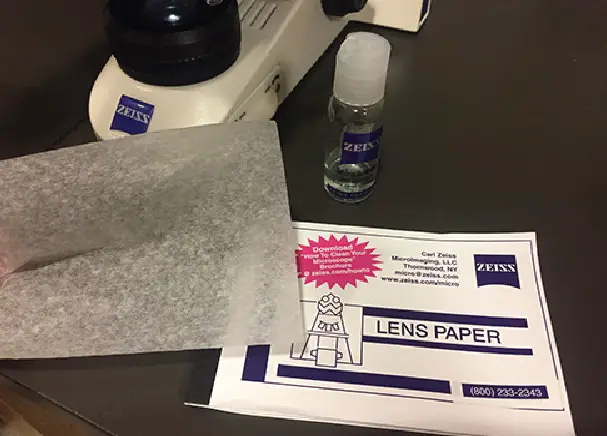
Where to buy microscope immersion oil
Amazon is the biggest online shopping place which offers 2 days shipping. You can find a variety of microscope immersion oil at Amazon. Rs’ Science also offers microscope immersion oil which also comes with a pack of cleaning paper. The immersion oil used in the above image of a blood vessel is from Rs’ Science.
Key takeaways
- The microscope immersion oil decreases the light refraction, allowing more light to pass through your specimen to the objectives lens. Therefore, the microscope immersion oil increases the resolution and improve the image quality.
- Make sure your lens is made for oil before putting immersion oil on it.
- After finishing immersion oil, be sure to clean the lens and the slide throughout.
Useful resource
- https://www.microscopyu.com/tutorials/immersion
- https://www.microscopeworld.com/t-using_microscope_immersion_oil.aspx
Do you see the difference? Does immersion oil improve your clarity? Please share it with us below!
Related posts
13 Tips You Should Know about Taking Care of Your Microscope

